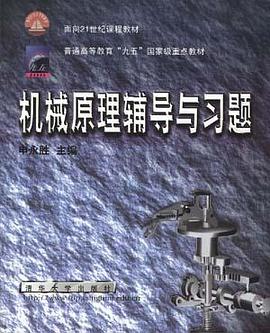Contents
Foreword
I. General Information About China
Q. 1. What is the socialist market economy?
Q. 2. What is reform and opening to the outside world?
Q. 3. How big is the Chinese territory? How about its
physical geography?
Q. 4. How are the Chinese administrative regions divided?
Q. 5. How is the climate in China?
Q. 6. Is China a country with a large territory and abundant
resources?
Q. 7. What are the criteria for classifying the economic types
in China?
Q. 8. What are the organizations of the Chinese government
that administer and control national economic activities?
Q. 9. How about the total national power of China today?
Can its economy continue to grow?
Q. 10. Can China become the largest market in the world?
II. Form of Investment
Q. 11. What is a special economic zone?
Q. 12. What is a coastal open city?
Q. 13. What is a new- and high-tech industrial development
zone?
Q. 14. What is a free trade zone and a bonded warehouse?
Q. 15. What are the forms used in China for bringing in
foreign capital?
Q. 16. What are the respective characteristics of a
Chinese-foreign equity joint venture, a Chinese-foreign
cooperative enterprise and an enterprise wholly owned
by foreign capital?
Q. 17. How is Chinese-foreign cooperative production car-
ried out?
Q. 18. What is "three supplies and one compensation"?
Q. 19. What is the BOT mode?
Q. 20. What is a "grafted enterprise"? What are its advan
tages and preferential terms?
Q. 21. How can one contract for the operation of a Chinese
enterprise?
Q. 22. How can one conduct a leasing business in China?
Q. 23. How can one develop and manage large tracts of land?
Q. 24. What is a foreign bank and what is a Chinese-foreign
joint bank?
III. The Fields for Investment
Q. 25. What are the industrial policies of the Chinese gov-
ernment?
Q. 26. What are the key points in the work of the Chinese
government in utilizing foreign capital during the Ninth
Five-Year Plan period?
Q. 27. What are the agricultural projects that welcome
foreign investment?
Q. 28. How about the prospect of investment in China's iron
and steel industry?
Q. 29. What are the energy projects that the Chinese govern-
ment permits overseas investors to develop?
Q. 30. What is the present situation in terms of transport and
communications in China? How about its prospects for
development? What are the preferential terms for the use of
foreign investment?
Q. 31. How about the investment environment in the
Chinese chemical industry?
Q. 32. What is the present situation in the Chinese machine-
building industry and its principle of development?
Q. 33. What is the present situation in the Chinese auto
industry and what are its prospects for development and
investment?
Q. 34. What is the present situation and what are its pros-
pects for the development of the electronics industry? What
are the key projects for the use of overseas funds and the
import of technology?
Q. 35. What is the present situation and what are its pros-
pects for the development of the power industry? And what
are the preferential policies related to the utilization of
foreign capital?
Q. 36. What is the basic situation of the Chinese civil
aviation industry and what are its prospects for develop-
ment?
Q. 37. What is the general situation in the Chinese construc-
tion industry and the building materials industry? And how
is their investment environment?
Q. 38. Which fields in China's light industry are open to
foreign investment and cooperation?
Q. 39. What is the present situation in the Chinese textile
industry? What are the tasks of its foreign trade and over-
seas investment?
Q. 40. Can foreign capital enter China's service market?
Which aspects does it consist of?
Q. 41. In which fields of Chinese commerce are overseas
investments permitted? What are their prospects for devel-
opment?
Q. 42. What are the prospects of development in the Chinese
information industry?
Q. 43. What is the present situation in the Chinese securities
market and what are the prospects for its develop-
ment?
Q. 44. What is the prospect for development and investment
in China's real estate?
Q. 45. What is the investment environment in the Chinese
tourist industry?
Q. 46. What is a rural enterprise? What are the prospects for
its development?
IV. Investment Environment
Q. 47. On what basis does China determine the open cities
and regions?
Q. 48. What is the general situation of the Shenzhen Special
Economic Zone?
Q. 49. What are the prospects for the future development of
Shenzhen?
Q. 50. What is the general situation of the Zhuhai Special
Economic Zone and what are the prospects for its economic
development?
Q. 51. What is the general situation of the Shantou Special
Economic Zone and what are the prospects for its future
economic development?
Q. 52. What is the general situation of the Xiamen Special
Economic Zone and what are the prospects for its future
development?
Q. 53. What is the general situation of the Hainan Special
Economic Zone and what are the prospects for its future
development?
Q. 54. What is the progress in the development of large tracts
of land in Yangpu?
Q. 55. What is the general situation of Dalian City and what
are the prospects for its economic development?
Q. 56. How is the construction of the development zones in
Dalian City progressing?
Q. 57. What is the general situation of Tianjin Municipality
and what are the prospects for its economic development?
Q. 58. How is the construction of the development zones in
Tianjin progressing?
Q. 59. What is the general situation of Qinhuangdao City
and what are the prospects for its economic development?
Q. 60. What is the general situation of Yantai City and what
are the prospects for its economic development?
Q. 61. How about the prospects for the economic develop-
ment of Qingdao City?
Q. 62. How is the construction of the development zones in
Qingdao City progressing?
Q. 63. What is the general situation of Lianyungang City
and what are the prospects for its economic development?
Q. 64. What is the general situation of Nanlong City and
what are the prospects for its economic development?
Q. 65. What is the general situation of Shanghai and what
are the prospects for its economic development?
Q. 66. What is the present situation and progress in the
development of the Pudong New Area in Shanghai?
Q. 67. What is the general situation of Ningbo City and what
are the prospects for its economic development?
Q. 68. What is the general situation of Wenzhou City and
what are the prospects for its economic development?
Q. 69. How about the present situation and progress in the
development of Fuzhou City?
Q. 70. What is the general situation of Guangzhou City and
what are the prospects for its economic development?
Q. 71. What is the general situation of Zhanjiang City and
what are the prospects for its economic development?
Q. 72. What is the general situation of Beihai City and what
are the prospects for its economic development?
Q. 73. What is the general situation of the Shandong Penin-
sula Economic Development Zone and what are the pros-
pects for its economic development?
Q. 74. What is the general situation of the Yangtze River
Delta and what are the prospects for its economic develop-
ment?
Q. 75. What is the economic significance of the Yangtze
River Valley and what are the prospects for its economic
development?
Q. 76. What is the economic significance of the Beijing-
Kowloon Railway and what are the prospects for the eco-
nomic development along that line?
Q. 77. What is the general situation of the Chinese section
of the Eurasia Bridge and how about its economic signifi-
cance?
Q. 78. What is the general situation of the Pearl River Delta
and what are the prospects for its economic development?
Q. 79. What is the general situation of the South Fujian
Delta and what are the prospects for its economic develop-
ment?
Q. 80. What is the general situation of the Liaodong Penin-
sula and what are the prospects for its economic develop-
ment?
Q. 81. What is the general situation of Beijing and what are
the prospects for its economic development?
Q. 82. What is the general situation of the Bohai Bay Area
and what are the prospects for its economic development?
Q. 83. What is the general situation in Northeast China and
what are the prospects for its economic development?
Q. 84. What is the economic significance of developing the
Tumen River Valley?
Q. 85. What is the general situation of Wuhan City and what
are the prospects forits economic development?
Q. 86. What is the general situation of Central China and
what are the prospects for its economic development?
Q. 87. What is the general situation of Chongqing City and
what are the prospects for its economic development?
Q. 88. What is the general situation of Chengdu City and
what are the prospects for its economic development?
Q. 89. What is the general situation of Southwest China and
what are the prospects for its economic development?
Q. 90. What is the general situation of Xi'an City and what
are the prospects for its economic development?
Q. 91. What is the general situation of Northwest China and
what are the prospects for its economic development?
V. Guide to Investment
Q. 92. What are the procedures for establishing a foreign-
invested enterprise in China?
Q. 93. What is the preferential policy of the Chinese govern-
ment for foreign investors in setting up factories in the
special economic zones?
Q. 94. What are the preferential policies of the Chinese
government for overseas investment in setting up factories
in the coastal open cities?
Q. 95. What is the preferential policy of the Chinese govern-
ment for overseas investment and taxation?
Q. 96. What are the new rules for taxation on enterprises
with foreign investment after the tax reform in 1994?
Q. 97. What are China's priorities in issuing loans to enter-
prises with foreign investment?
Q. 98. With which countries has China signed investment
protection agreements and agreements on avoiding dual
taxation?
Q. 99. What is China's preferential policy for trans-national
companies?
Q. 100. In which fields does China strictly prohibit
local authorities from giving more preferential treatments
to overseas investors?
Q. 101. What measures has China taken to tighten control
over the registration of foreign-invested enterprises for their
investment?
Q. 102. What fundamental principles does China follow
when it formulates economic laws and regulations related to
overseas investment?
Q. 103. What is the secret of the success of the Hong Kong
China Tactics Investment Company in making investments
in the Chinese hinterland?
Q. 104. How is it best to handle relations with trade unions
in foreign-invested enterprises?
Q. 105. What are the advantages China has when new
emerging countries are competing to import overseas funds?
Q. 106. What are the new tendencies of overseas investors in
making investments in China?
Appendix: China's Foreign Economic Laws and Regulations
· · · · · · (
收起)






















